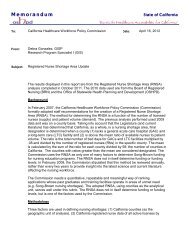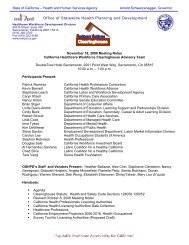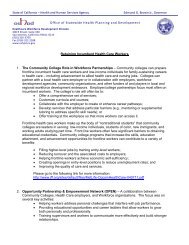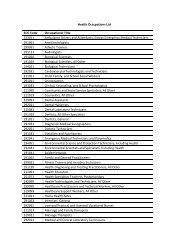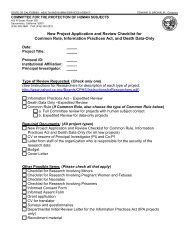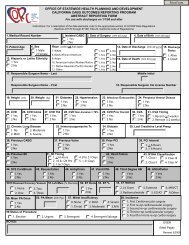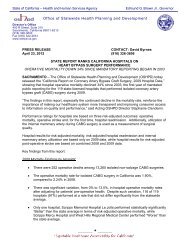Best Practices for Project Management, Design, and Construction of ...
Best Practices for Project Management, Design, and Construction of ...
Best Practices for Project Management, Design, and Construction of ...
Create successful ePaper yourself
Turn your PDF publications into a flip-book with our unique Google optimized e-Paper software.
• Explain code requirements <strong>for</strong> shop drawings, submittal, review, <strong>and</strong> approval. Outline<br />
procedures <strong>for</strong> meeting the requirements <strong>and</strong> how submittals will impact project schedule.<br />
• Explain the procedures <strong>and</strong> requirements <strong>for</strong> approving Amended <strong>Construction</strong><br />
Documents. Review the approved TIO Program.<br />
• Discuss the schedule <strong>for</strong> submittal <strong>of</strong> deferred approval items to avoid delays in<br />
construction.<br />
• Request scheduling requests from owners <strong>and</strong> contact in<strong>for</strong>mation <strong>for</strong> the hospital<br />
representative.<br />
The IOR should do the following:<br />
• Ask how the contractors intend to accomplish the work <strong>and</strong> allow them to walk you through<br />
the construction process.<br />
• Review the specifications. Frequently the subcontractor is unaware <strong>of</strong> the unique<br />
requirements <strong>of</strong> the project <strong>and</strong> may not have reviewed the specifications.<br />
• Give a copy <strong>of</strong> the inspection request to all parties <strong>and</strong> review who looks at the work prior<br />
to inspection, reasons <strong>for</strong> rejection, how the IOR will notify them, <strong>and</strong> what the notification<br />
requirements are. It is important to stipulate the quality st<strong>and</strong>ards expected so that all<br />
responsible parties will adhere to the inspection requirements.<br />
• Review the TIO Program requirements.<br />
• Briefly review the noncompliance procedures.<br />
• Review what the IOR wants to see <strong>and</strong> at what stage the IOR must per<strong>for</strong>m inspections.<br />
• Discuss material inspection upon arrival at the project.<br />
• Ensure that contractors <strong>and</strong> subcontractors underst<strong>and</strong> how facilities are coordinated<br />
through the IOR <strong>and</strong> the project manager.<br />
• Make it clear to the contractor that the IOR is not responsible <strong>for</strong> reviewing the adequacy<br />
<strong>of</strong> the contractor’s safety program.<br />
• If OSHPD field representatives are not present, describe AHJ involvement <strong>and</strong> review the<br />
requirements <strong>and</strong> procedures with contractors <strong>and</strong> subcontractors. It is always a good<br />
idea to conduct a site assessment after the meeting to review the installation process <strong>and</strong><br />
setup. This allows everyone to have a clear picture.<br />
The preconstruction meeting is an opportune time to bring up fire stopping <strong>of</strong> penetrations <strong>and</strong> to<br />
in<strong>for</strong>m the contractor that all penetrations will have to be completed per a listed testing agency<br />
such as Underwriters Laboratories (UL). Engineering judgments should only be used in extreme<br />
cases. Bringing such issues to the contractor’s attention early should mitigate potential problems.<br />
(OSHPD <strong>Best</strong> <strong>Practices</strong>) Page 71 DRAFT FINAL, Sept. 2011



